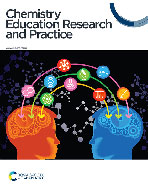The role of visuospatial thinking in students’ predictions of molecular geometry
Abstract
Visuospatial thinking is considered crucial for understanding of three-dimensional spatial concepts in STEM disciplines. Despite their importance, little is known about the underlying cognitive processing required to spatially reason and the varied strategies students may employ to solve visuospatial problems. This study seeks to identify and describe how and when students use imagistic or analytical reasoning when making pen-on-paper predictions about molecular geometry and if particular reasoning strategies are linked to greater accuracy of responses. Student reasoning was evidenced through pen-on-paper responses generated by high attaining, high school students (N = 10) studying Valence Shell Electron Pair Repulsion (VSEPR) Theory in their final year of chemistry. Through analysis and coding of students’ open-ended paper-based responses to an introductory task, results revealed that students employed multiple reasoning strategies, including analytical heuristics and the spontaneous construction of external diagrammatic representations to predict molecular geometry. Importantly, it was observed that despite being instructed on the use of VSEPR theory to find analytical solutions, some students exhibited preference for alternative reasoning strategies drawing on prior knowledge and imagistic reasoning; showing greater accuracy with 3D diagrammatic representations than students who used the algorithmic method of instruction. This has implications for both research and practice as use of specific reasoning strategies are not readily promoted as a pedagogical approach nor are they given credit for in national examinations at school level.


 Please wait while we load your content...
Please wait while we load your content...